The city never loses its charm, and the nonstop spawning of new restaurants and arts spaces is a testament to its endless creativity. Video: New York Times
Buenos Aires, fabled for its prized beef, luscious malbec and fiery tango, has a far better-kept secret: superb markets. Unlike so many places in the world, they're not your standard circus of mass-produced, overpriced, tacky tourist fare, but handcrafted, quality goods, sold at stalls mostly manned by the artisans themselves.
As one particularly bombastic American stallholder explained to me (he was one of the few sellers that spoke English, so I was receptive to the ear bashing), there are actually strict rules in Buenos Aires governing artisan markets, or "ferias", especially the more famous ones. You can't just rock up with your imported cheap watches and knock-off designer bags, slap a 1000 per cent mark-up on them and wait for the gullible gringos to open their wallets. He assured me you couldn't have a stall unless you were selling your own wares, and flashed me his stallholder ID as proof of his bona fides.
That would explain why my wanderings around the various markets turned up surprisingly few goods the same. There was a bespoke quality to nearly all of them, whether it was ghoulish masks, hand-knitted alpaca socks, or clocks made from melted down wine bottles.
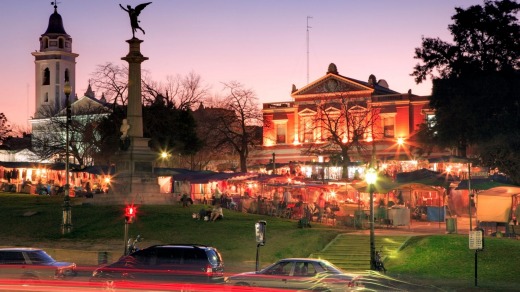
Prices are not cheap, but that reflects the quality. Most don't accept credit cards. You can try haggling, but stallholders rarely budge by more than 10 per cent, so I suspect there's little fat in their margins. But with the city's roaring "blue market", basically the unofficial exchange rate for US dollars, giving you up to 40 per cent more than the official rate if you're exchanging US dollars in the right places, hey, you can afford to spend up big, right?
This was my first introduction to Buenos Aires' open-air artisan markets on a visit a couple of years ago, and still remains my favourite. I came away draped in delicate handmade silverware and wrapped in beautiful silk scarves and mohair wraps I still love. How often can you say that about impulsive overseas purchases?
Recoleta is mostly a quiet, residential neighbourhood, home to luxury shopping strip Avenida Alvear, ritzy hotels and its major tourist attraction, Recoleta Cemetery, where Eva Peron finally found a resting place, years after her death. It's in the park leading up to the cemetery gates, at the end of Avenida Presidente Quintana, you'll find these weekend markets.
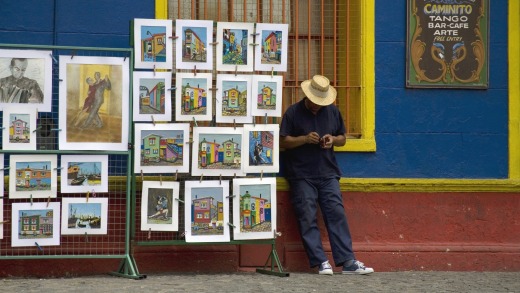
They line the paths that wind around manicured lawns, and have everything: jewellery, clothes, fired enamel plates, handmade shoes and handbags, hand-blown glass (little ships in light bulbs was an interesting one). It's more like wandering around a contemporary art fair than market stalls. At the end, grab a bite from a food stall, take a spot on the grassy knoll and watch local performers work the weekend crowds.
WHERE: Plaza Francia, Libertador Avenue, Recoleta
WHEN: Weekends and public holidays, 11am-6pm (later in summer).
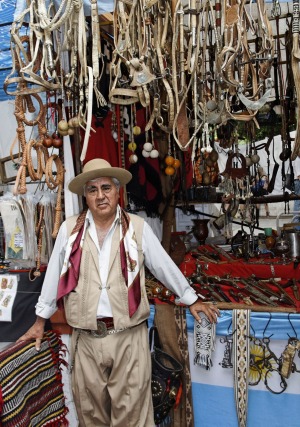
Far from Recoleta's rarefied atmosphere is the rambunctious, loud, chaotic, rough and tumble of Feria de Mataderos, in the scruffy end of town, about an hour by bus from the centre. It's the working-class neighbourhood where the cattle used to be brought in for slaughter and then shipped to all parts of the country. You won't find Chanel here. But you're not in Mataderos for the luxury goods; you've come for the atmosphere of fair day. There's gauchos (Argentine cowboys) strutting their stuff, children darting around in colourful costumes, tango, folk dancing, traditional musicians ... a lot of it performed on an outdoor stage surrounded by clapping, cheering, rowdy locals. There's an area packed with food stalls and communal tables, so just grab a plate of empanadas and a vino, shuffle up and clink plastic with the locals. Of course, there are plenty of stalls, many traditional South American in style, offering flutes, colourful rugs, clothes, intriguing local food products, as well as jewellery, ceramics and other favourites. The table of knives was curious. It's a bit of a hike to get to, but that keeps the tourist crowds away.
WHERE: Av. Lisandro de la Torre and Avenida de los Corrales.
WHEN: Sundays and public holidays, 11am-6.30 pm.
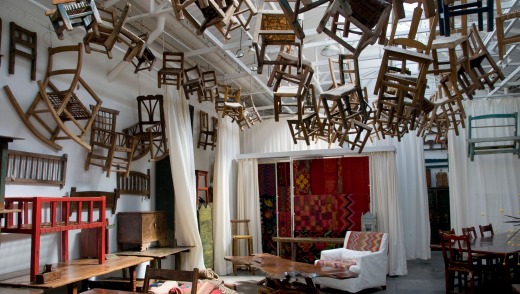
Everyone loves this mad, lively street bazaar; it's impossible not to. There's nothing you can't find here, from antiques to wild streetwear. San Telmo is one of the oldest neighbourhoods, or barrios, in Buenos Aires, with cobbled streets, and interesting shops and cafes. It's near the waterfront, so used to be home to dockers and bricklayers, and the migrant working class. Now, of course, it's fully bohemian, but still not gentrified enough that it's lost its soul. Much of its 19th century Spanish-influence architecture is intact. The markets are so big it's unlikely you'll have either the stamina or desire to get to all 300-odd stalls. The streets are narrow, the crowds are thick and the pickpockets are out in force. The stalls basically start around Plaza Dorrego, and stretch down 13 blocks of Defensa and off onto a few side streets, almost all the way down to Plaza de Mayo. Overwhelmed at one point, I ducked down little Estados Unidos and switched to the parallel Bolivar street, which was stall-free and clear of crowds. Bliss. That was when I stumbled across Mercado San Telmo, which occupies an entire city block. It's an undercover market housed in a glorious meld of old and new architecture. Its core is food markets, which fan out into the coolest collection of retro bric-a-brac I've ever seen, including Latino vintage posters at dirt-cheap prices, old gramophones, mink stalls and funky lights. Perhaps not practical purchases for travellers, but brilliant for a wander – and a respite from the heaving crowds outside.
WHERE: Plaza Dorrego and along Calle Defensa, San Telmo.
WHEN: Sundays, 10am-4pm, with some activities on Saturdays.
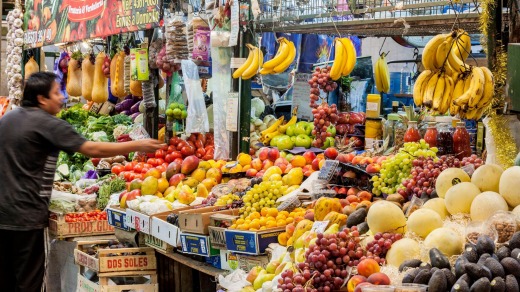
Mercado San Telmo is open every day, 10am-7pm
The traditional home of tango, just one barrio along from San Telmo, is home to a much more compact market, in the street stretching down to the old port and along the waterfront. A visit to La Boca is inescapable. It's the home of Boca Juniors, Argentina's famous soccer team, and you can clearly see the high stadium walls in the distance. It's also where the city's favourite tourist attraction is located: the colourful houses and pedestrian street, Caminito, packed with lively bars, restaurants, and tango dancers who are always keen to test tourists' spontaneity, with an outstretched hand and cheeky smile. The atmosphere is lively, the photo opportunities infinite, and the markets couldn't be further from banal tourist fare. There's plenty of original art works, jewellery, glassware and novelty knick-knacks.
WHERE: Between Magallanes and Dr del Valle Iberlucea, La Boca.
WHEN: Weekends and public holidays, 10am-6pm.
Palermo is without question the coolest neighbourhood in Buenos Aires, the epitome of effortless urban chic. That is quite some feat, when shop assistants look like they're straight off a fashion shoot and window displays are more like something you'd see in a modern art museum. Time your shopping trip for the weekend, after the suburb wakes up at a civilised 9-11ish, and retailers are rattling open the shutters and polishing up windows. When you tire of the eye candy, wander up Honduras to Plaza Julio Cortazar, grab a bite to eat at one of the many sidewalk cafes, then stroll around the first of the two artisan markets in this area. It is right in front of you, in the paved roundabout, spilling down a few side streets; the second is just a few blocks away at Plaza Armenia. Befitting the area, it ranges from handmade quirkiness, to fantastic leather goods and handbags. If you can't find at least half a dozen bargain presents to bring home, you're not looking hard enough.
WHERE: Between Serrano and Honduras, Palermo. Feria Artesanal Palermo Viejo is at nearby Plaza Armenia.
WHEN: Weekends and public holidays, 10am-8pm.
turismo.buenosaires.gob.ar
southamericatourism.com/destination/argentina/
Qantas and LAN fly to Santiago, Chile, with connections to Buenos Aires. qantas.com.au; lan.com. From December 1, Air New Zealand will commence flights to Buenos Aires, Argentina, via Auckland; airnewzealand.com.au.